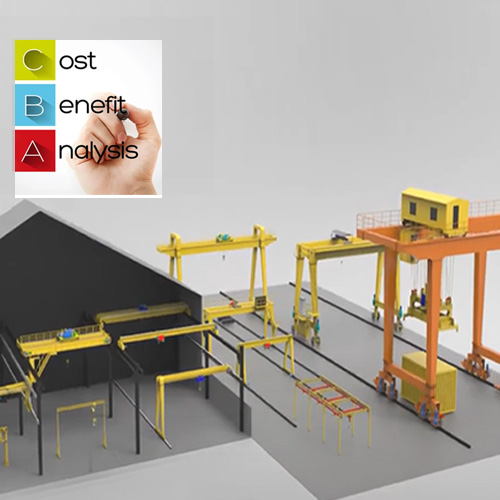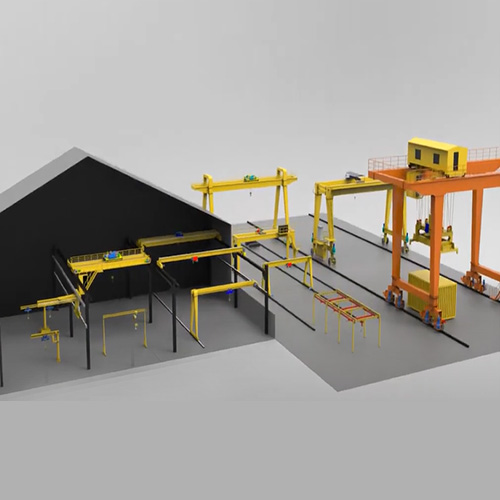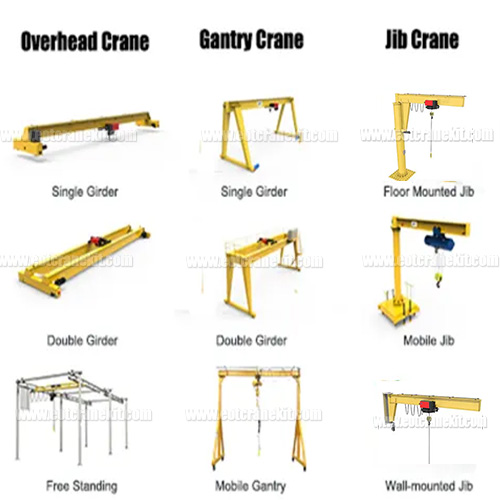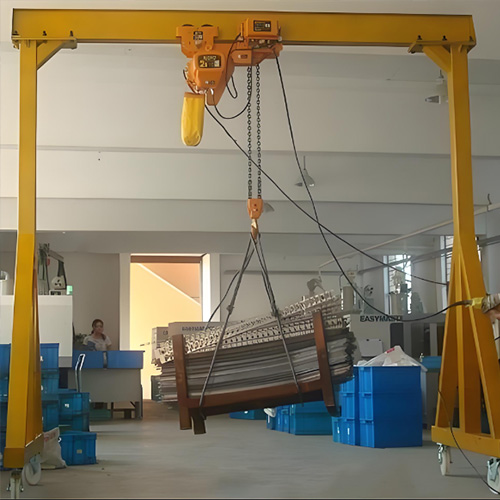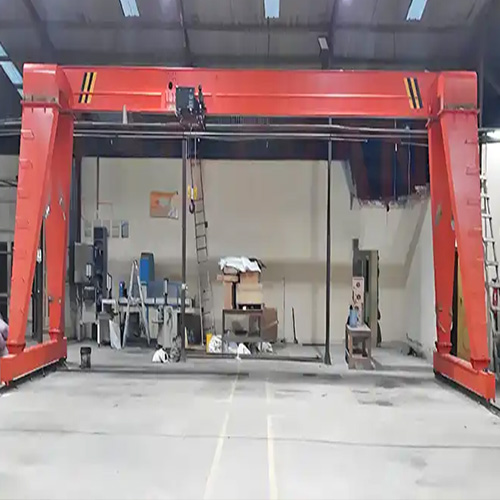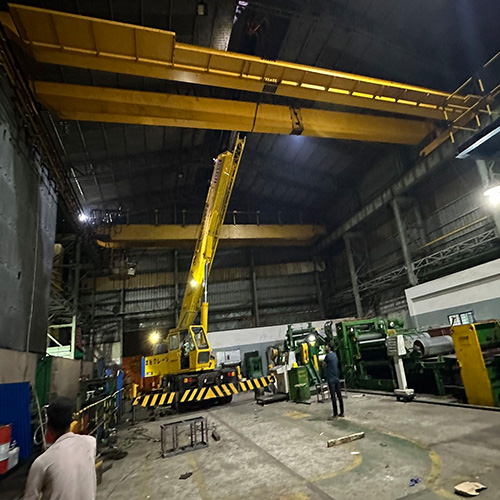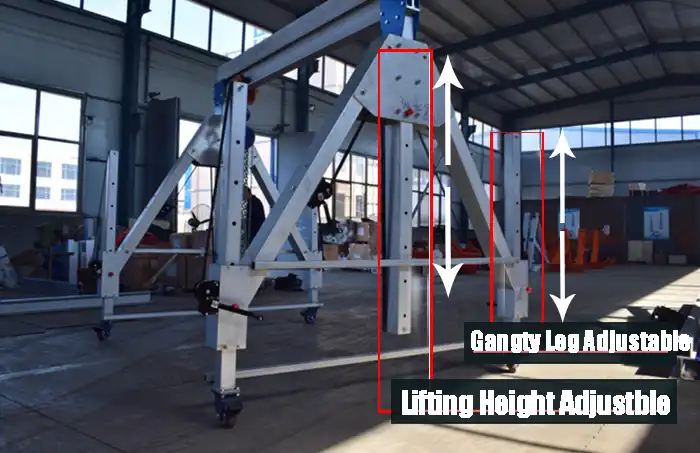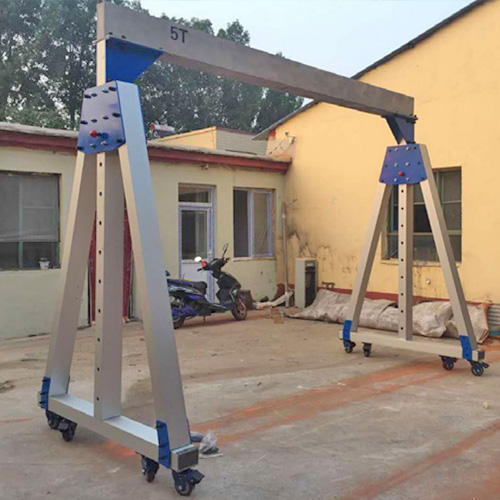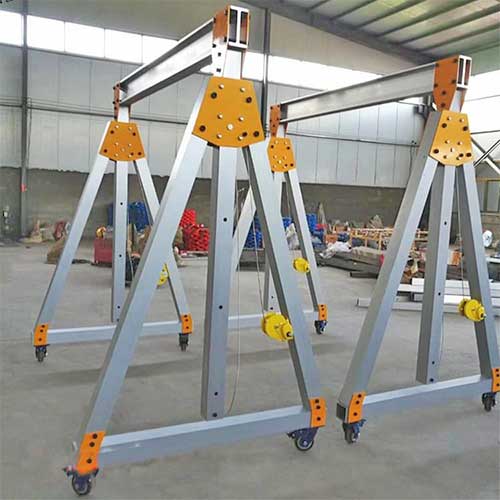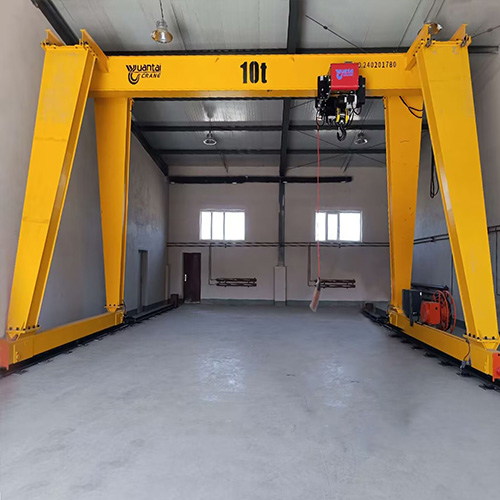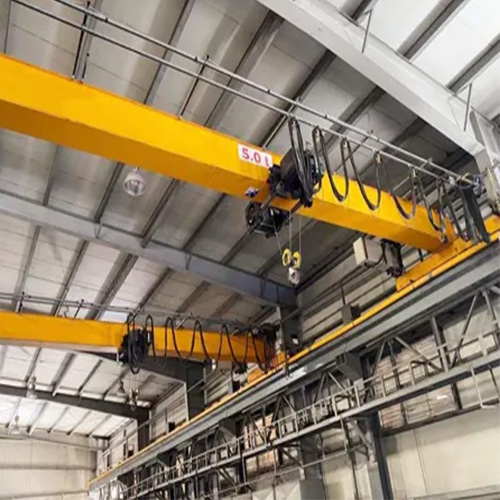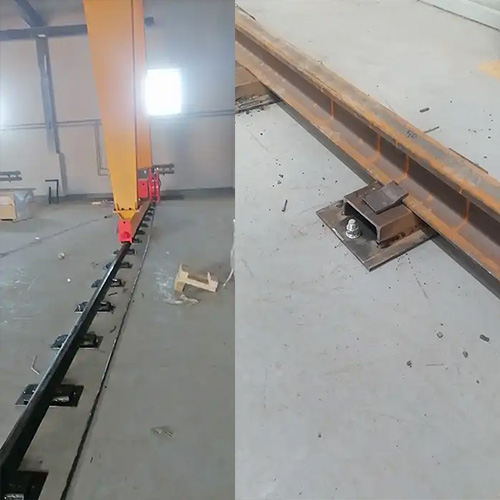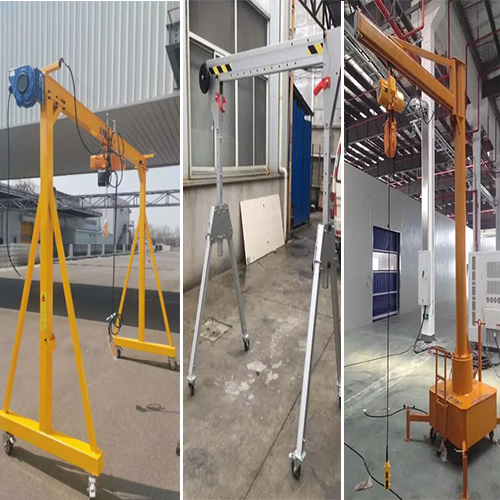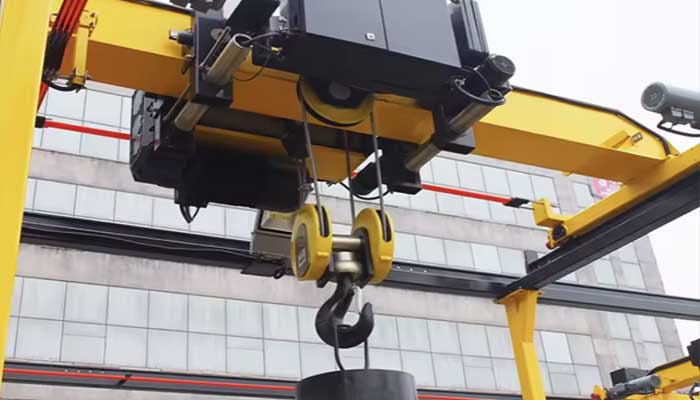
FEM Lifting Hooks for Euro Hoist and Crane, All You Need to Know
FEM Hoists Hooks and Cranes Hooks M2 5 ton, 10 ton for sale. A comprehensive on FEM crane hook and FEM hoist hook, All you need to know. Check it now.
Comprehensive Guide to FEM Electric Crane Hooks
Electric cranes have revolutionized material handling across industries, offering efficient and reliable solutions for lifting heavy loads. In this guide, we delve into the world of FEM electric crane hooks, exploring their components, operation, and maintenance.
Electric cranes, as the name suggests, are cranes powered by electricity rather than traditional fuel sources. They are designed to lift and move heavy objects with precision and ease, making them indispensable in construction sites, manufacturing facilities, warehouses, and more.
The evolution of crane technology has been remarkable, with electric cranes representing a significant advancement. From manual hoists to steam powered and hydraulic cranes, the industry has continuously innovated to meet the growing demands of modern day lifting operations.
Advantages of Electric Cranes
Electric cranes offer several advantages over their counterparts. They provide smoother and more controlled movements, reducing the risk of accidents and damage to goods. Additionally, they are quieter and produce fewer emissions, contributing to a safer and more environmentally friendly work environment.
Types of Electric Cranes
There are various types of electric cranes, each tailored to specific applications:
- Overhead Cranes: These cranes are suspended from the ceiling and are commonly used in manufacturing plants and warehouses for lifting and moving heavy loads horizontally.
- Gantry Cranes: Gantry cranes are similar to overhead cranes but are supported by freestanding legs, allowing them to be moved around the workspace. They are often used in outdoor settings such as shipyards and construction sites.
- Jib Cranes: Jib cranes feature a horizontal arm (jib) that is mounted to a vertical support structure. They are ideal for lifting and maneuvering loads within a limited radius and are commonly found in workshops and loading docks.
Electric cranes play a vital role in improving efficiency and productivity in material handling operations. In the following parts of this guide, we will delve deeper into the specifics of FEM electric crane hooks, exploring their compliance with standards, design considerations, installation, operation, and maintenance. Stay tuned for more insights!
FEM Standards
FEM (Fédération Européenne de la Manutention) standards play a crucial role in ensuring the safety, reliability, and performance of electric crane hooks. Let's delve deeper into understanding FEM standards and their significance in crane design.
Overview of FEM (Fédération Européenne de la Manutention)
FEM, or the European Materials Handling Federation, is a leading organization dedicated to promoting excellence and innovation in material handling equipment and systems. With a rich history dating back to 1953, FEM collaborates with industry experts, manufacturers, and regulatory bodies to develop and maintain standards that govern the design, manufacture, and operation of cranes, hoists, and other lifting equipment.
Importance of FEM Standards in Crane Design
FEM standards serve as a benchmark for crane manufacturers, guiding them in the development of safe, efficient, and compliant products. These standards encompass various aspects of crane design, including structural integrity, electrical systems, safety features, and performance criteria. By adhering to FEM standards, manufacturers ensure that their products meet stringent quality and safety requirements, enhancing trust and confidence among users.
FEM Classification of Cranes
FEM classifies cranes based on their intended use, load capacity, and operating conditions. The classification system provides a standardized framework for categorizing cranes, enabling users to select the most suitable equipment for their specific requirements. Common classifications include:
FEM Class I: Light duty cranes designed for occasional use with low to moderate load capacities.
FEM Class II: Medium duty cranes suitable for regular use in light industrial applications with moderate load capacities.
FEM Class III: Heavy duty cranes engineered for continuous operation in demanding industrial environments with high load capacities.
FEM Class IV: Extra heavy duty cranes designed for intensive use in extreme conditions with very high load capacities.
FEM classifications helps users identify cranes that match their workload, ensuring optimal performance and longevity.
FEM Electric Crane Hook Standards
FEM (Fédération Européenne de la Manutention) establishes standards for electric crane hooks to ensure their safety, reliability, and performance. Let's explore the standards set by FEM for electric crane hooks, including markings and their meanings.
Markings and Their Meanings
Electric crane hooks are often marked with symbols and letters indicating specific characteristics and features. Understanding these markings is crucial for ensuring proper use and compliance with standards. Here are some common markings found on FEM electric crane hooks and their meanings:

- First "M" (Raw or Blank State): The presence of the first "M" indicates that the hook is in its raw or blank state. This means that it has not undergone any processing or shaping and is in its initial form before manufacturing.
- Second "M" (Forging): The second "M" signifies that the hook has undergone a forging process. Forging involves shaping metal by applying compressive forces, resulting in a stronger and more durable hook compared to other manufacturing methods.
- "D" (Protruding Ear of Safety Latch): The "D" marking indicates the presence of a protruding ear or lever of the safety latch on the hook. This safety feature helps prevent accidental release of the load by securely locking the hook onto the lifting attachment.
- "T" (Strength Grade): The "T" marking represents the strength grade or classification of the hook. It indicates the maximum load capacity or weight that the hook can safely lift under specified conditions. Higher strength grades denote hooks capable of lifting heavier loads.
These markings is essential for ensuring the safe and proper use of FEM electric crane hooks. In the following sections of this guide, we will delve deeper into the implications of these standards on crane design, operation, and maintenance, emphasizing the importance of compliance for optimal safety and performance. Stay tuned for more insights into FEM electric crane hooks!
Components of FEM Electric Crane Hooks
FEM electric crane hooks are composed of various components that work together to facilitate safe and efficient lifting operations. Let's explore the key components of FEM electric crane hooks in detail:
Hook Block Assembly:
Hook: The primary component responsible for lifting and suspending the load. Hooks are typically forged from high strength steel to withstand heavy loads.
Safety Latch: A mechanism attached to the hook to prevent accidental release of the load. Safety latches provide an additional layer of security during lifting operations.
Sheaves: Pulley wheels mounted on the hook block assembly that guide the lifting rope or chain. Sheaves help distribute the load evenly and reduce friction during lifting.
Hoist Motor and Gearbox :
The hoist motor and gearbox provide the necessary power and torque to lift and lower the load. These components are typically housed within the hoist unit and are designed for durability and reliability.
Control System :
Pendant Control: A handheld control device connected to the crane via cables, allowing the operator to control the movement of the crane, including lifting, lowering, and traversing.
Radio Remote Control: An alternative control option that enables wireless operation of the crane. Radio remote controls offer flexibility and convenience, especially in environments where wired controls are impractical.
Power Supply :
Electric Cables: Cables used to transmit electrical power and control signals between the crane and the power source. These cables must be properly insulated and protected to ensure safe and reliable operation.
Power Distribution System: The infrastructure responsible for distributing electrical power to the crane and its components. This may include overhead busbars, festoon systems, or cable reels.
Safety Features :
Overload Protection: Systems designed to prevent the crane from lifting loads beyond its rated capacity. Overload protection mechanisms automatically stop the lifting operation if the load exceeds a predetermined limit.
Emergency Stop Button: A prominent button located on the crane's control panel that immediately halts all crane movements in case of an emergency.
Limit Switches: Sensors installed at strategic locations on the crane to limit its travel and prevent collisions with obstacles. Limit switches are essential for preventing accidents and protecting the crane and its surroundings.
These components and safety features collectively contribute to the safe and reliable operation of FEM electric crane hooks. In the subsequent sections of this guide, we will explore how these components are integrated into the design, installation, and operation of FEM electric crane hooks, emphasizing the importance of adherence to safety standards and best practices. Stay tuned for more insights into FEM electric crane hooks!
 5 ton electric hoist and crane hook FEM 2 M
5 ton electric hoist and crane hook FEM 2 M
Design Considerations for FEM Electric Crane Hooks
When designing FEM electric crane hooks, several key factors must be carefully considered to ensure safety, efficiency, and reliability. What are the critical design considerations for FEM electric crane hooks? Check on the following tips:
- Load Capacity Calculation:Determining the load capacity of an electric crane hook is paramount to its safe operation. Engineers must assess various factors such as the maximum weight of the load to be lifted, the frequency of lifts, and the environmental conditions in which the crane will operate. Accurate load capacity calculations prevent overloading, which can lead to equipment damage, accidents, and injuries.
- Material Selection: Selecting the appropriate materials for constructing FEM electric crane hooks is essential for ensuring strength, durability, and resistance to wear and corrosion. High strength alloys, such as alloy steel or forged steel, are commonly used for crane hook components due to their robustness and ability to withstand heavy loads and harsh operating environments.
- Structural Integrity: Maintaining structural integrity is critical to the safety and reliability of electric crane hooks. Engineers must ensure that the hook's design and construction meet or exceed industry standards and regulatory requirements. Structural analysis techniques, such as finite element analysis (FEA), are often employed to assess the structural integrity and performance of crane hooks under various loading conditions.
- Ergonomics and Operator Comfort :Consideration of ergonomics and operator comfort is vital in the design of FEM electric crane hooks. The hook's design should facilitate ease of use, minimize operator fatigue, and provide ergonomic features such as non slip surfaces and comfortable handles. Ergonomically designed hooks contribute to increased productivity and safety by reducing the risk of operator errors and injuries.
- Environmental Factors :Environmental factors, such as temperature, humidity, and exposure to chemicals or corrosive substances, can significantly impact the performance and longevity of electric crane hooks. Designers must account for these factors when selecting materials, coatings, and sealing mechanisms to ensure that the hooks can withstand the rigors of their operating environment without degradation or failure.
By carefully considering these design considerations, engineers can develop FEM electric crane hooks that meet the highest standards of safety, reliability, and performance, enhancing efficiency and minimizing risks in material handling operations.
Installation and Maintenance of FEM Electric Crane Hooks
Installing and maintaining FEM electric crane hooks is essential to ensure their safe and efficient operation. Let's explore the key aspects of installation and maintenance:
- Installation Procedures: Proper installation is critical to the performance and safety of FEM electric crane hooks. Installation procedures should be carried out by qualified personnel following manufacturer guidelines and industry best practices. This includes tasks such as mounting the hook block assembly, connecting the hoist motor and control system, and verifying electrical connections. Careful attention should be paid to alignment, levelness, and securing of components to prevent misalignment or instability during operation.
- Regular Inspection and Maintenance Schedule: Regular inspection and maintenance are necessary to identify and address potential issues before they escalate into safety hazards or equipment failures. A comprehensive maintenance schedule should be established, outlining routine tasks such as lubrication, inspection of components for wear or damage, and testing of safety features. Inspections should be conducted by trained personnel according to a predetermined frequency, with records maintained for documentation and compliance purposes.
- Troubleshooting Common Issues: Despite preventative measures, issues may arise with FEM electric crane hooks during their lifespan. Operators and maintenance personnel should be equipped with the knowledge and skills to troubleshoot common issues effectively. This includes identifying the root cause of problems, implementing corrective actions, and minimizing downtime. Common issues may include electrical faults, mechanical failures, or issues with safety features such as overload protection or limit switches.
- Training for Operators and Maintenance Personnel: Proper training is crucial for both operators and maintenance personnel involved in the operation and upkeep of FEM electric crane hooks. Training programs should cover topics such as safe operation procedures, equipment functionality, maintenance protocols, and emergency response procedures. Training should be conducted by qualified instructors and regularly updated to reflect changes in equipment or regulations. Well trained personnel are better equipped to operate equipment safely, identify potential issues, and perform maintenance tasks effectively, contributing to overall operational efficiency and safety.
By adhering to proper installation and maintenance procedures and providing comprehensive training to personnel, organizations can ensure the reliable performance and longevity of FEM electric crane hooks, enhancing safety and productivity in material handling operations.

Safety Practices and Regulations
Ensuring safety is paramount in the operation of FEM electric crane hooks. This section highlights key safety practices and regulations to promote a secure working environment:
- Occupational Safety and Health Administration (OSHA) Standards : In the United States, the Occupational Safety and Health Administration (OSHA) sets standards and regulations to ensure workplace safety, including those related to the operation of cranes and lifting equipment. Compliance with OSHA standards is mandatory for employers, and adherence to regulations such as 29 CFR 1910.179 for overhead and gantry cranes is essential to mitigate risks and prevent accidents.
- European Machinery Directive : The European Machinery Directive (2006/42/EC) outlines essential health and safety requirements for machinery, including electric crane hooks, sold or used within the European Union (EU) market. Compliance with the Machinery Directive is mandatory for manufacturers, ensuring that equipment meets stringent safety requirements and undergoes thorough risk assessments and conformity assessments before being placed on the market.
- Risk Assessment and Management : Risk assessment and management are integral components of safety practices for FEM electric crane hooks. Employers and operators must conduct comprehensive risk assessments to identify potential hazards associated with crane operations and implement appropriate control measures to mitigate risks. This includes measures such as implementing safe work procedures, providing adequate training for personnel, and implementing engineering controls to minimize exposure to hazards.
- Personal Protective Equipment (PPE) Requirements: Personal protective equipment (PPE) plays a vital role in safeguarding workers from potential hazards associated with crane operations. Depending on the specific risks identified during risk assessments, PPE requirements may include items such as hard hats, safety glasses, gloves, and high visibility clothing. Employers must ensure that appropriate PPE is provided to workers and that they are trained in its correct use and maintenance.
By adhering to safety practices and regulations outlined by organizations such as OSHA and the European Machinery Directive, employers can create a safer working environment for personnel involved in the operation of FEM electric crane hooks. Implementing comprehensive risk assessments, providing appropriate training, and ensuring compliance with PPE requirements are essential steps in mitigating risks and preventing accidents in crane operations.

Case Studies and Applications
Real world applications of FEM electric crane hooks showcase their versatility and effectiveness across various industries. Let's explore some case studies highlighting their applications:
- Industrial Manufacturing : In industrial manufacturing facilities, FEM electric crane hooks play a crucial role in handling heavy machinery, components, and raw materials. These cranes facilitate efficient material movement within production lines, assembly areas, and storage facilities. With precise control and robust construction, electric crane hooks enhance productivity and streamline operations in manufacturing plants.
- Construction Sites : Construction sites demand reliable lifting solutions to maneuver heavy construction materials and equipment safely. FEM electric crane hooks are commonly used in construction projects for tasks such as lifting steel beams, concrete panels, and prefabricated structures. Their flexibility, mobility, and high load capacity make them indispensable for lifting operations in challenging construction environments.
- Warehousing and Logistics: In warehousing and logistics operations, FEM electric crane hooks enable efficient handling of goods, pallets, and containers. These cranes are utilized for loading and unloading trucks, transporting materials within warehouses, and stacking goods in storage racks. With their ability to navigate tight spaces and lift heavy loads with precision, electric crane hooks optimize material flow and storage efficiency in distribution centers and logistics facilities.
- Ports and Shipping Yards : Ports and shipping yards rely heavily on FEM electric crane hooks for loading and unloading cargo from ships, handling containers, and transferring goods between vessels and storage areas. Electric crane hooks with high load capacities and extended reach capabilities are essential for efficiently managing the flow of goods in busy port environments. Their durability and reliability ensure continuous operation, even in harsh marine conditions.
These case studies demonstrate the diverse applications and benefits of FEM electric crane hooks across industrial sectors. By providing reliable lifting solutions, enhancing productivity, and improving safety standards, electric crane hooks contribute to the smooth and efficient operation of various industries, driving economic growth and development.
Conclusion
As we conclude our comprehensive guide to FEM electric crane hooks, let's recap the key points discussed, emphasize their importance in modern industry, and contemplate future developments in this field.
Recap of Key Points
Throughout this guide, we've explored various aspects of FEM electric crane hooks, including their components, design considerations, installation, maintenance, safety practices, regulations, and real world applications. Key points covered include:
Understanding FEM standards and regulations governing electric crane hooks.
Examining the components and design considerations essential for safe and efficient crane operation.
Discussing installation procedures, maintenance practices, and adherence to safety regulations.
Exploring real world applications of FEM electric crane hooks across diverse industries.
FEM electric crane hooks play a pivotal role in modern industry by facilitating efficient material handling, improving productivity, and enhancing safety. Their robust design, adherence to stringent standards, and advanced safety features make them indispensable assets in industrial manufacturing, construction sites, warehousing, logistics, ports, and shipping yards. FEM electric crane hooks not only streamline lifting operations but also contribute to cost savings, reduced downtime, and improved workplace safety.
In conclusion, FEM electric crane hooks represent a cornerstone of efficient and safe material handling operations in various industries. By embracing technological advancements, adhering to stringent standards, and prioritizing safety, organizations can harness the full potential of FEM electric crane hooks to drive innovation, improve productivity, and ensure a sustainable future in the ever evolving landscape of industrial manufacturing and logistics.

